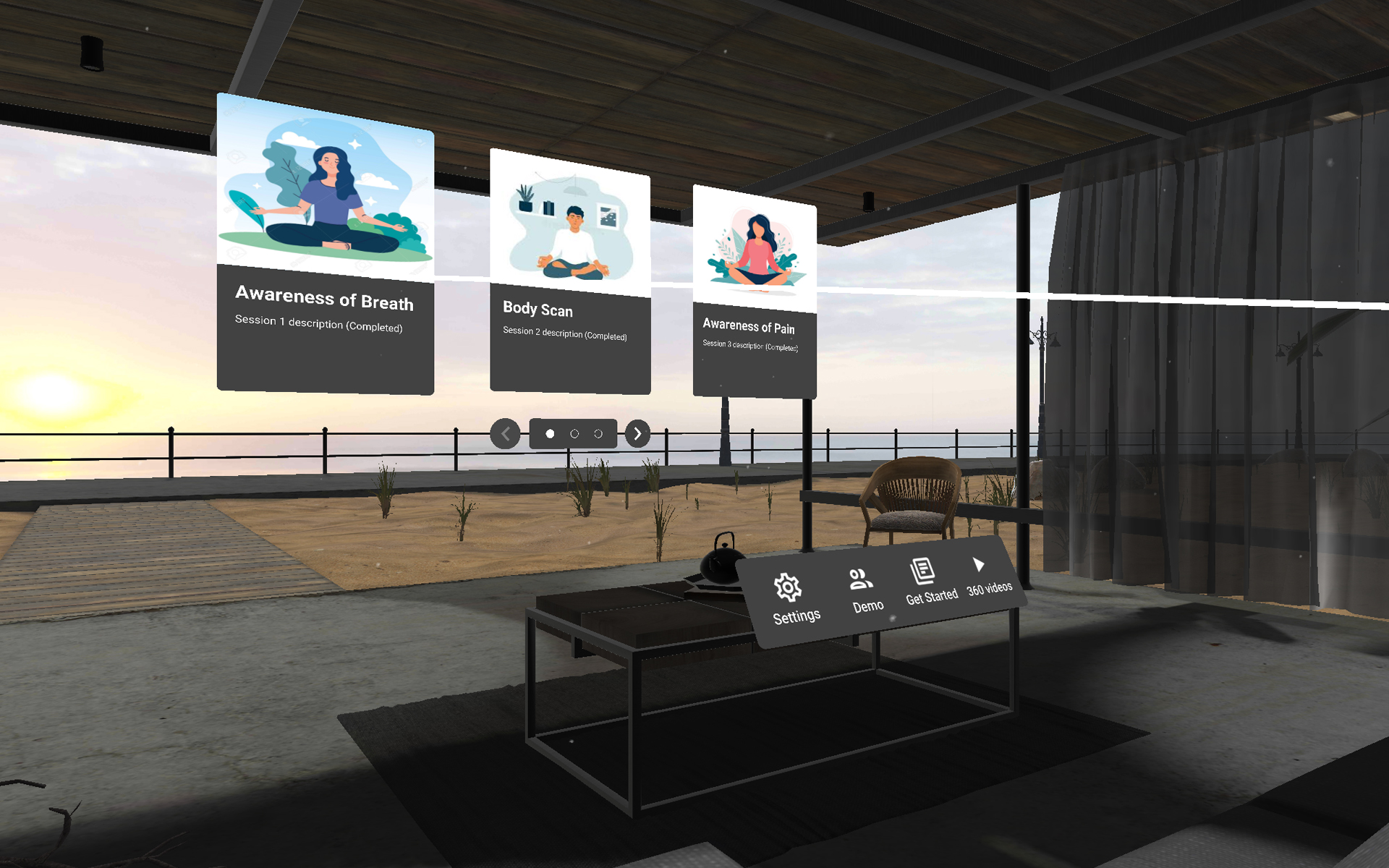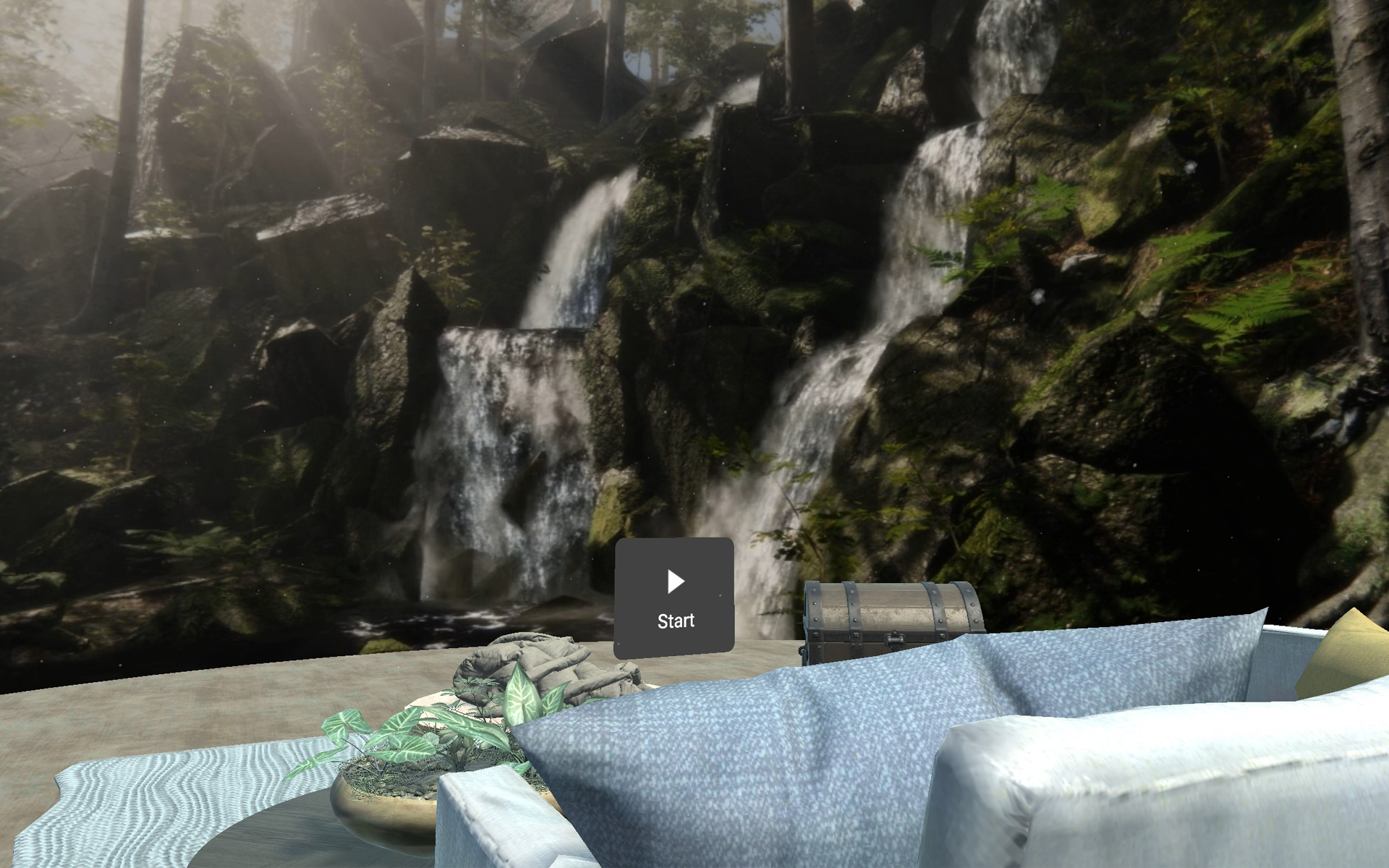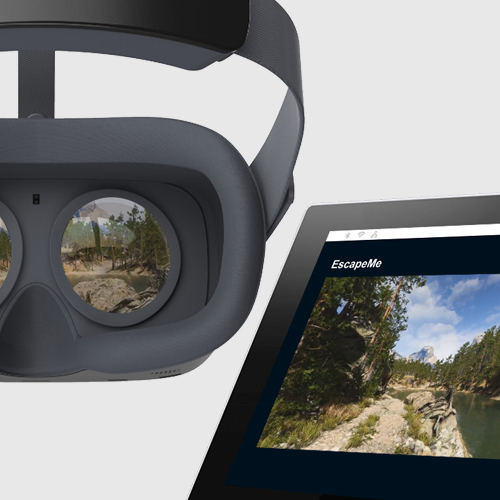
OncoVR
The client has approached us with a task of developing a full VR application, intended for oncology patients, to mitigate pain that they may experience in course of their illness. The client came up with a scenario for a meditation program, that involved an interactive experience for the user but needed to produce an MVP of the product.
What were our tasks
- Produce the specification document, based on the client’s own scenario;
- Create VR environments for meditation sessions;
- Set up and develop all interactive sequences presented to user during mediation scenarios;
- Gather necessary data from the patients to measure effectiveness of the end-product and provide insights for the medical staff;
What we did.
We started from creating a complete specification, which would later encompass the whole project. During multiple meetings with the client we have outlined all the requirements for the MVP. We came up with a document, that was approved by the client and used during following development process.
Once we had the specification narrowed down, we focused on developing the product. There were 3 main parts that we needed to pay attention to:
- The core experience with all the interactive features;
- Realistic environments for the user to be immersed in, while going through the interactive sequences;
- Gathering data inputs from the user and a way to store and retrieve them from the device;
The hardware platform that we used was Pico VR headset and the whole application was developed using Unity and Pico VR SDK.
We needed to keep the performance of the device at sufficient level while running the application, so the user wouldn’t experience adverse effects, that may interfere with the meditation process. That’s why we tried multiple approaches while creating the environments. At first we tried to create full 3D real-time environments, but after doing so we acknowledged that the performance of the platform is not enough to support both interactive sections and render rich real-time environment. Second option was resorting to use pre-rendered 360 videos and that happened to be an adequate solution for the performance problem.
We have chosen a number of environmental Unity packages, that the client has purchased and then used them to render in-engine high-definition 360 panoramic videos. We used powerful cloud GPU server to render environment videos and then successfully imported them in the project to play along the meditation sequences.
The main section of the app was split in 7 unique sessions, an each consisted of number of interactive tasks presented to the user with accompanying voiceover, guiding the user through the process.
All interactions were done in gaze control mode in order not to burden the user with the controller manipulation.
An important requirement for the project was to design and implement data gathering and retrieval process. Data was acquired before and after each session, and stored on the device for later use. All the information was kept on the device, because the application was running in offline mode all the time. Most of the data kept on the device was in form of surveys filled by the user, and we needed a quick way to rearrange questions in surveys and adapt them for changing requirements. All the settings and survey questions were kept in JSON files that could be easily edited before shipping the product to final user.
Finally we have delivered the MVP, that became result of our work which could be demonstrated to the stakeholders and potential clients.





